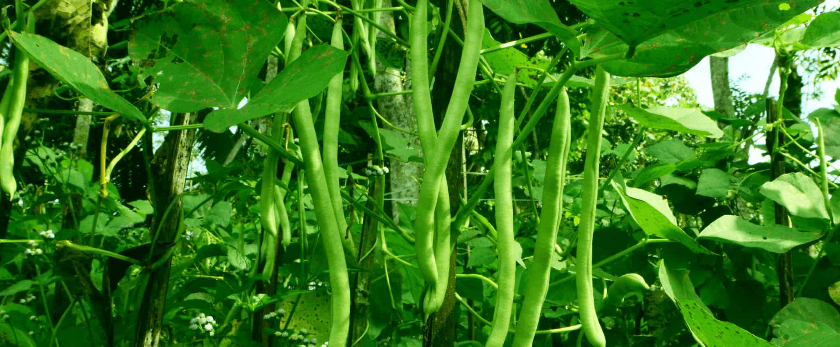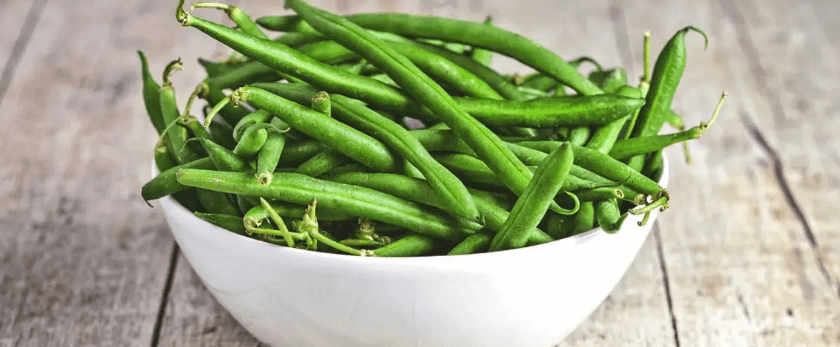Green beans, also known as string beans or snap beans, are a popular and versatile vegetable that can be grown in a variety of climates and soil conditions. Not only are they delicious and nutritious, but they are also easy to grow and can be a great addition to any sustainable garden. In this article, we will discuss the steps to successfully grow green beans, as well as tips for caring for them and common problems you may encounter.
How to Care for Green Beans
Watering
Green beans require consistent moisture to thrive, but they do not like to be waterlogged. It is important to keep the soil evenly moist, but not soggy. The best way to achieve this is by watering deeply once or twice a week, rather than lightly every day. This will encourage the roots to grow deeper and make the plants more resilient to drought.
Light
Green beans are sun-loving plants and require at least 6-8 hours of direct sunlight per day. They can tolerate some shade, but too much shade can result in poor growth and lower yields. If you are growing green beans in a container, make sure to place it in a sunny spot or use a grow light to supplement natural light.
Soil
Green beans prefer well-drained, loamy soil with a pH level between 6.0-7.0. If your soil is too acidic, you can add lime to raise the pH level. If it is too alkaline, you can add sulfur to lower the pH level. It is also important to ensure that the soil is rich in organic matter, as this will provide the necessary nutrients for the plants to thrive.
Fertilizer
Green beans are light feeders and do not require a lot of fertilizer. However, adding compost or well-rotted manure to the soil before planting can provide a good source of nutrients. You can also use a balanced fertilizer, such as a 10-10-10, once or twice during the growing season. Avoid using high-nitrogen fertilizers, as this can result in excessive foliage growth and fewer beans.
Pruning
Green beans do not require pruning, but it can help to promote better air circulation and prevent diseases. If you notice any dead or damaged leaves, remove them promptly. You can also pinch off the growing tips of the plants when they reach the top of their support structure, which will encourage the plants to produce more lateral branches and, therefore, more beans.

What is the Best Time to Grow Green Beans?
Green beans are warm-season crops and should be planted after the last frost date in your area. They prefer warm soil temperatures between 60-85°F, so it is best to wait until the soil has warmed up before planting. In most regions, this will be in late spring or early summer. However, if you live in a mild climate, you can also plant green beans in the fall for a second harvest.
Common Problems with Green Beans
Pests
Green beans are relatively pest-resistant, but they can still be susceptible to some common garden pests, such as aphids, bean beetles, and spider mites. To prevent these pests, it is important to keep your garden clean and free of debris, as well as regularly inspect your plants for any signs of infestation. You can also use natural pest control methods, such as introducing beneficial insects or using homemade insecticidal soap.
Diseases
Green beans can also be affected by various diseases, such as powdery mildew, bacterial blight, and root rot. To prevent these diseases, it is important to practice good garden hygiene, such as rotating crops and avoiding overhead watering. If you notice any signs of disease, remove the affected plants immediately to prevent it from spreading to other plants.
Nutrient Deficiencies
If your green bean plants are not producing as many beans as expected, it could be due to a nutrient deficiency. The most common deficiencies in green beans are nitrogen, phosphorus, and potassium. To address this issue, you can use a balanced fertilizer or add compost or manure to the soil.
Conclusion
Growing green beans is a rewarding and sustainable gardening practice that can provide you with a bountiful harvest of delicious and nutritious vegetables. By following the tips and techniques outlined in this article, you can successfully grow green beans in your own backyard. Remember to care for your plants by providing them with adequate water, sunlight, and nutrients, and to address any problems that may arise promptly. With a little bit of effort and patience, you can enjoy fresh, homegrown green beans all season long.










